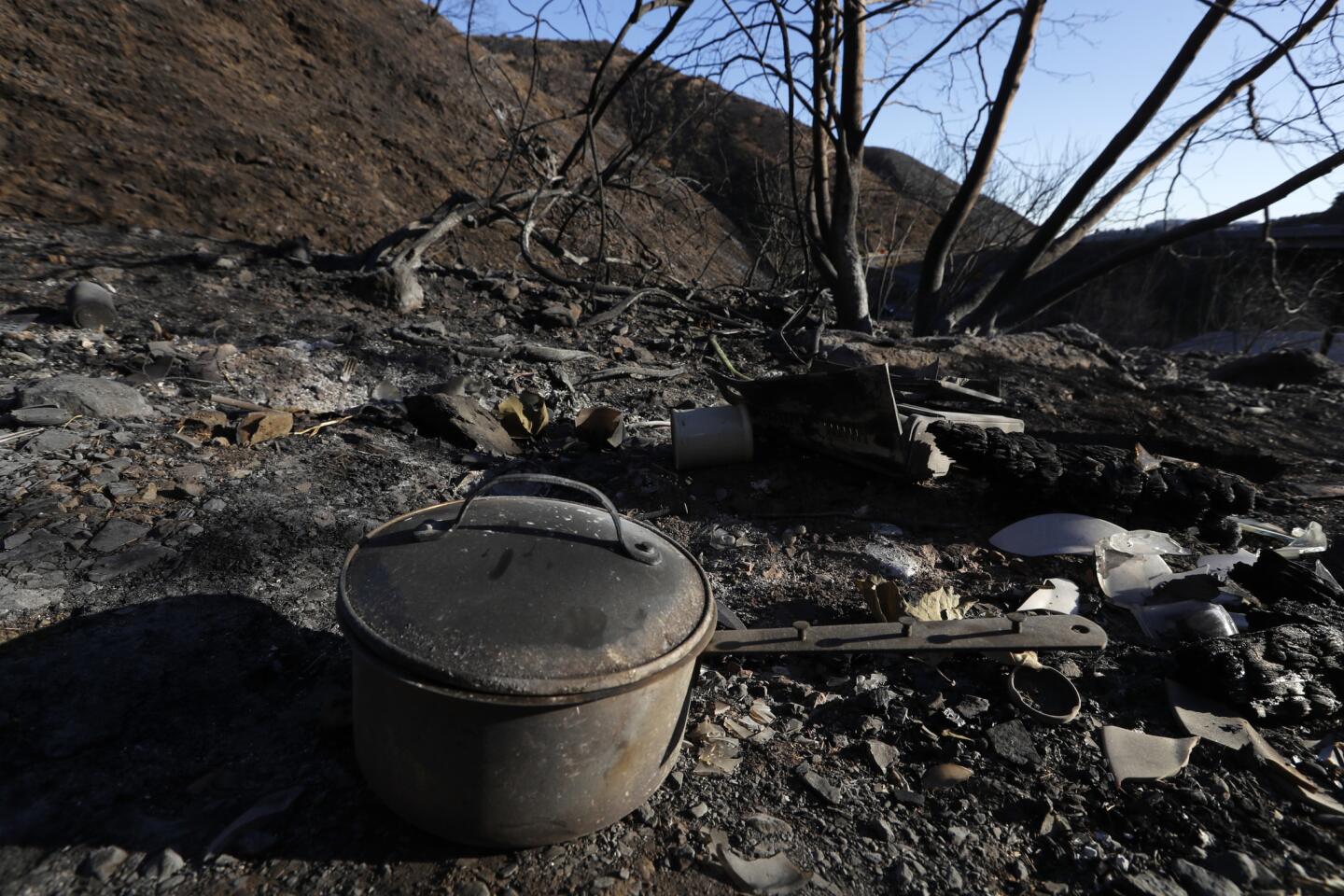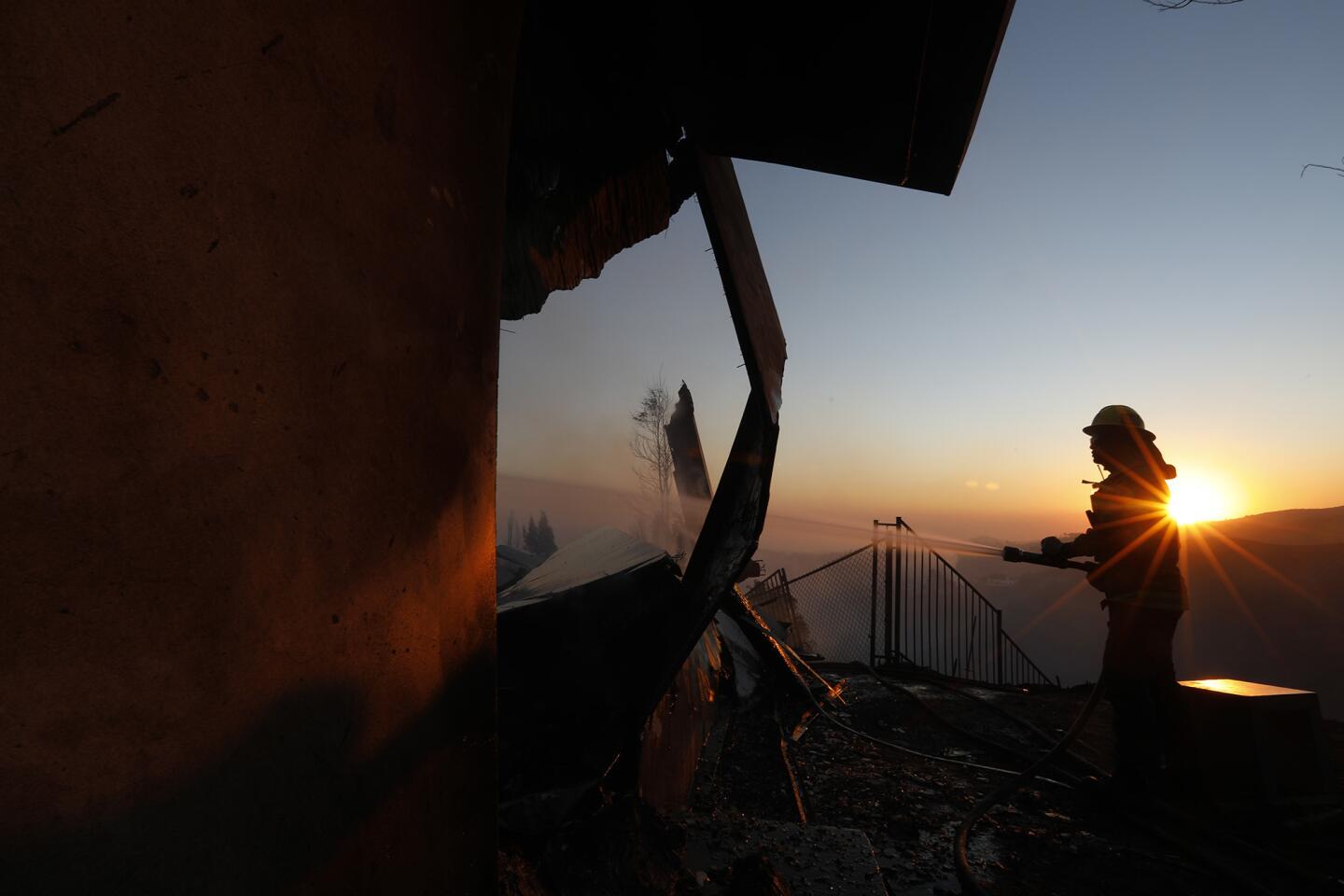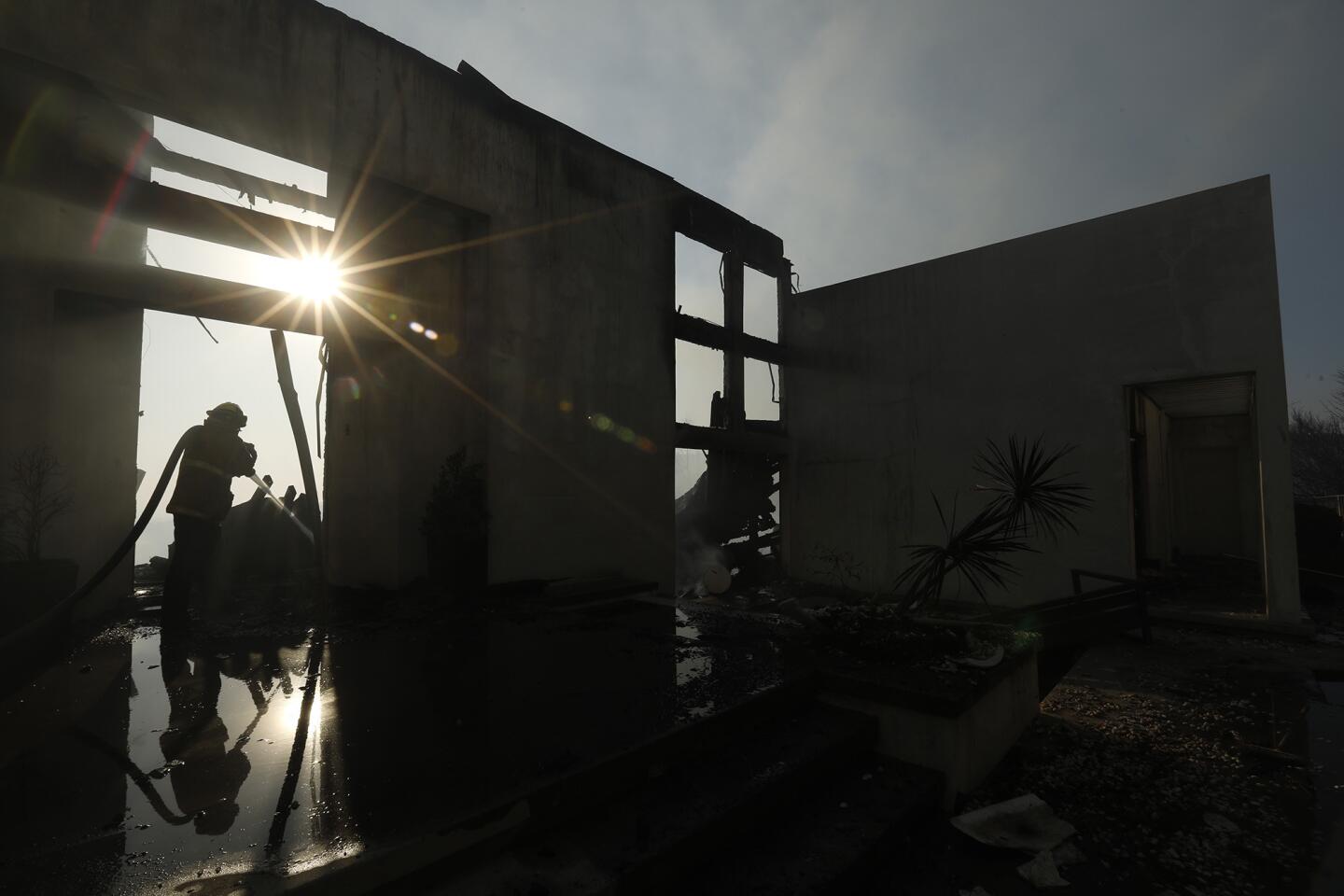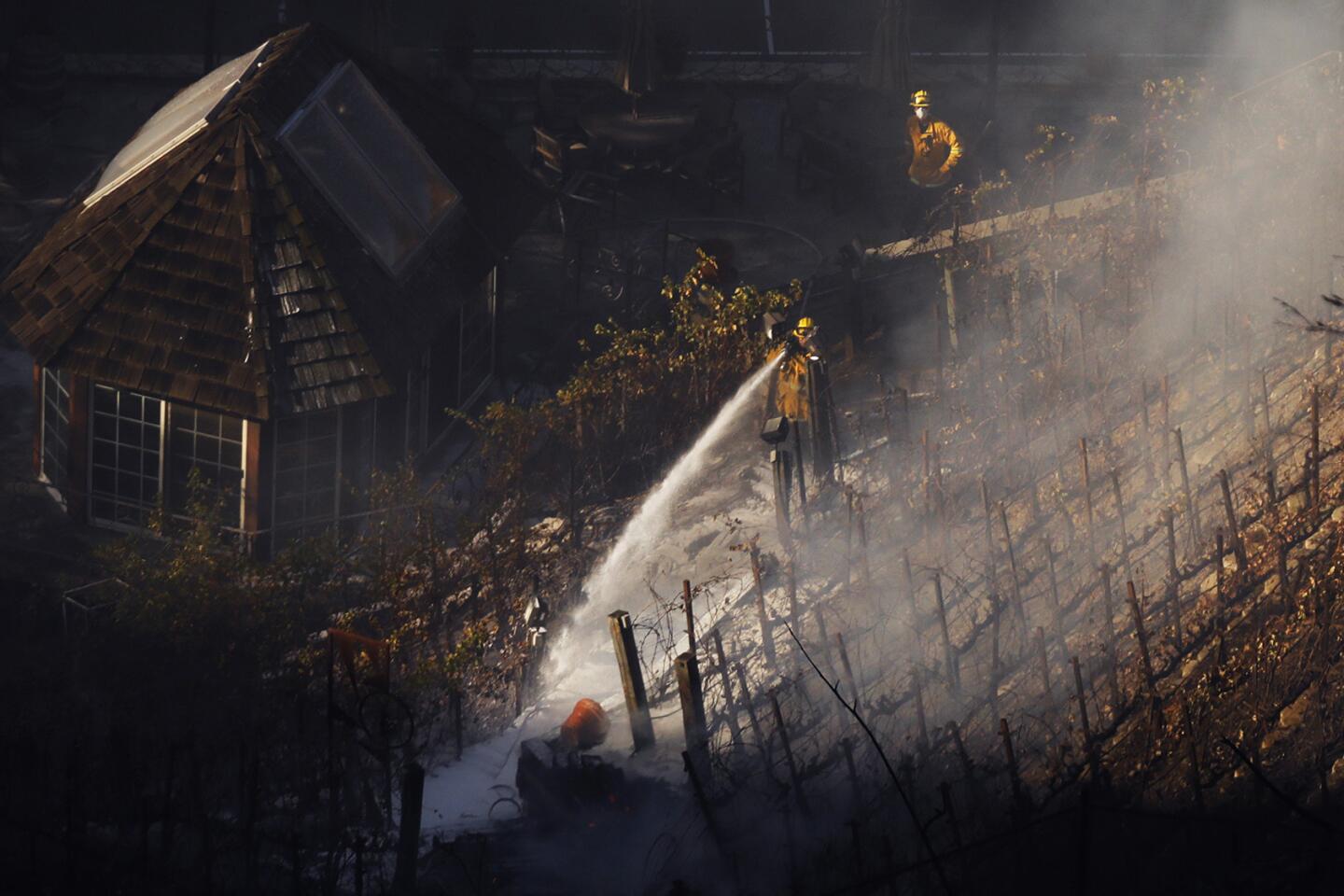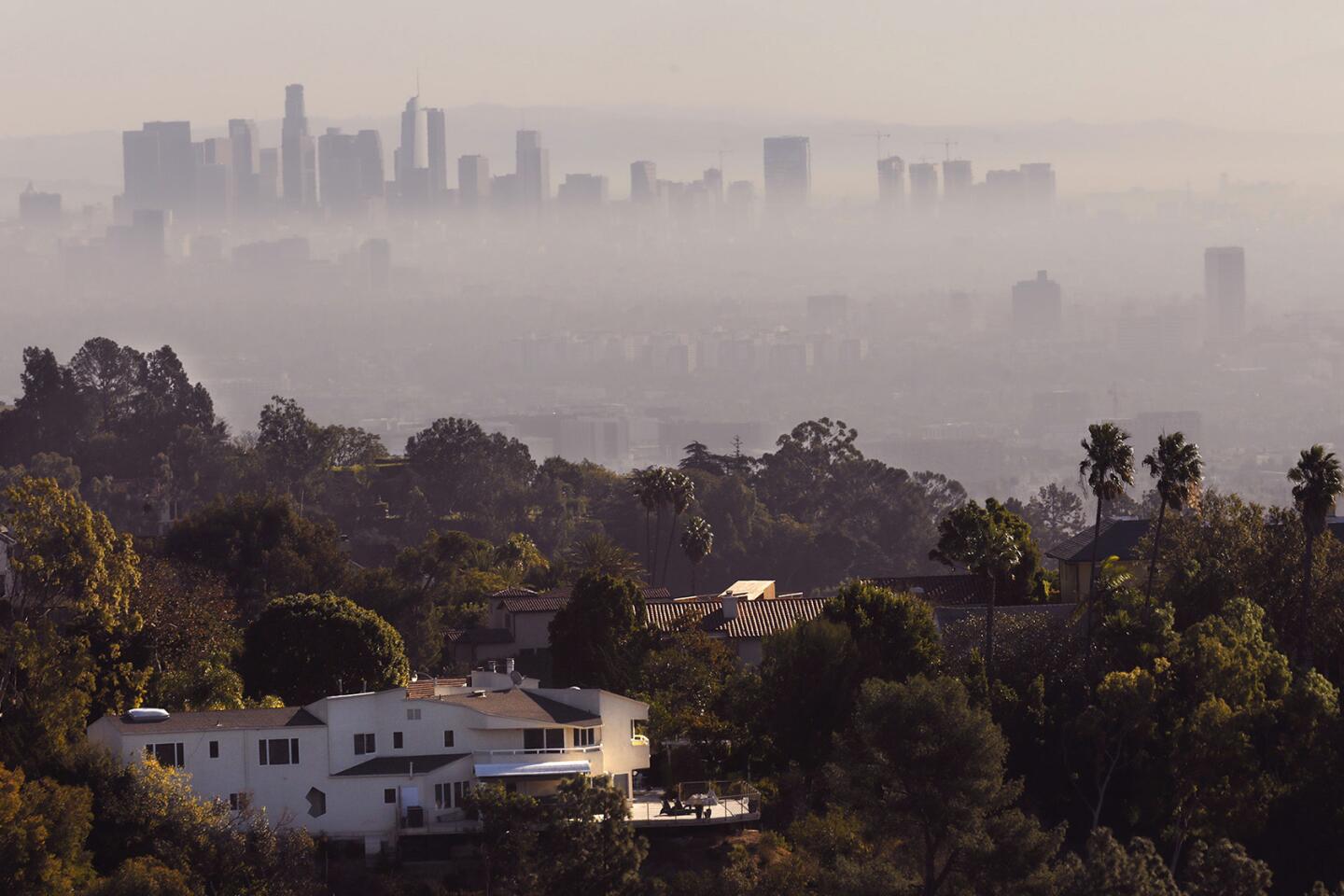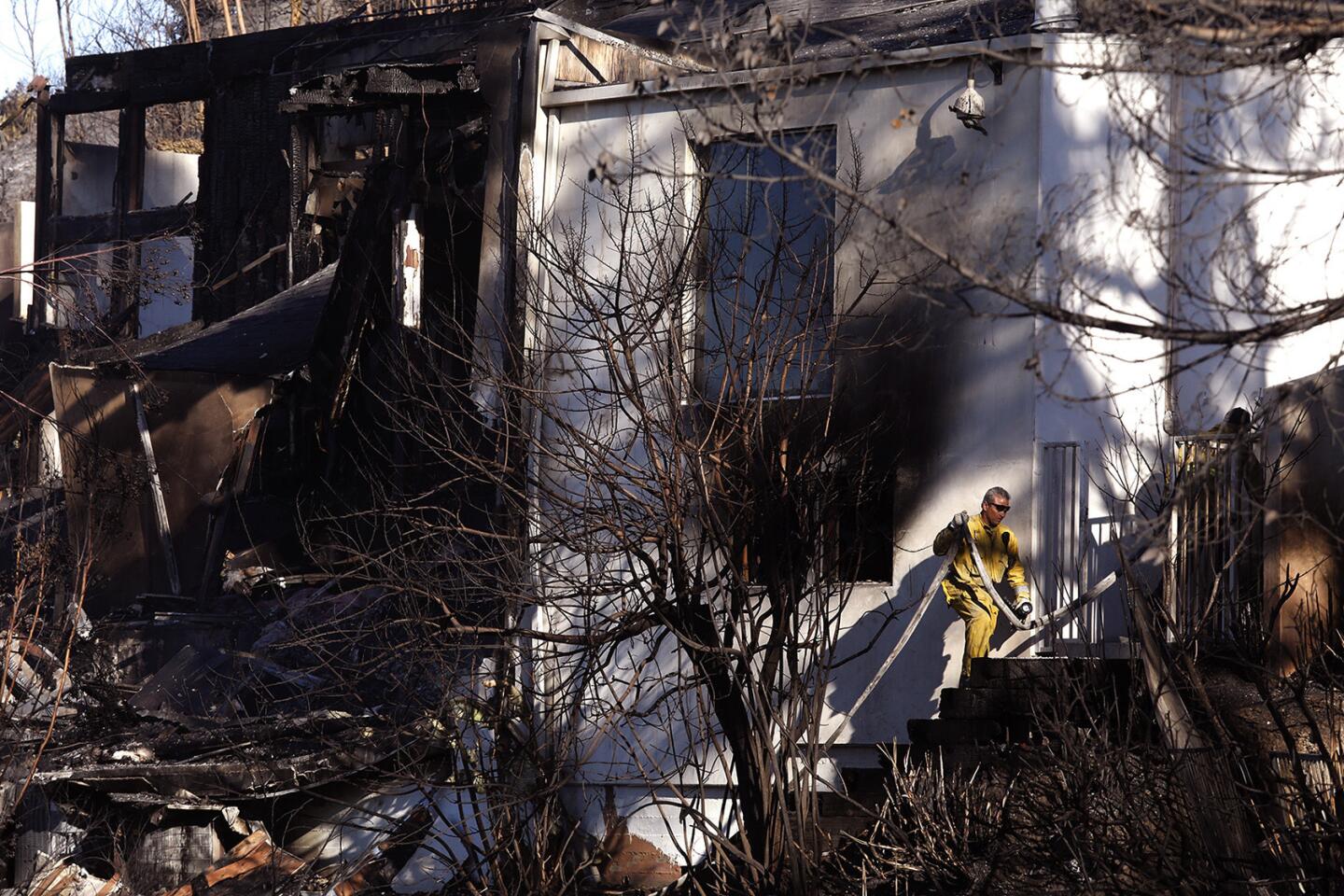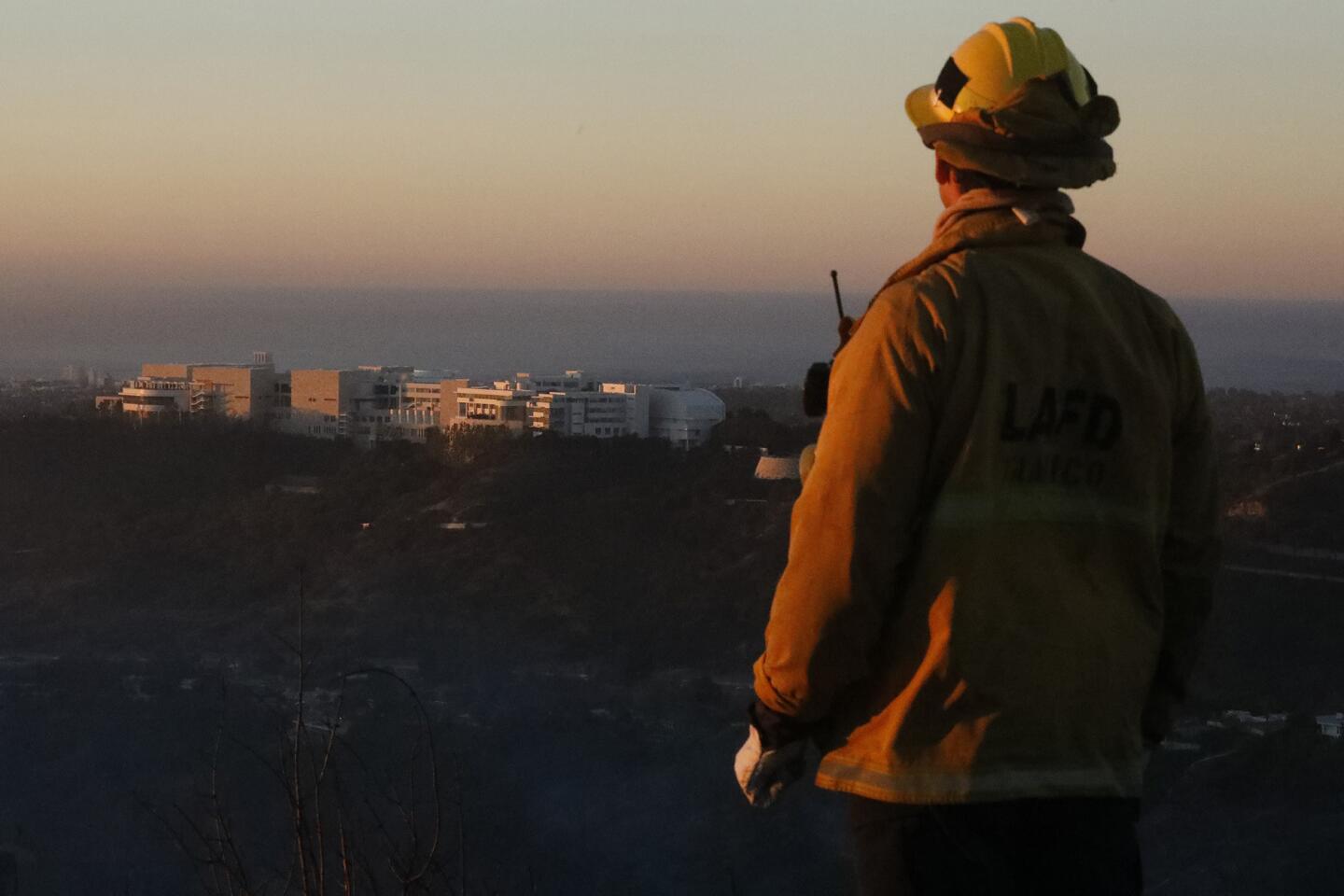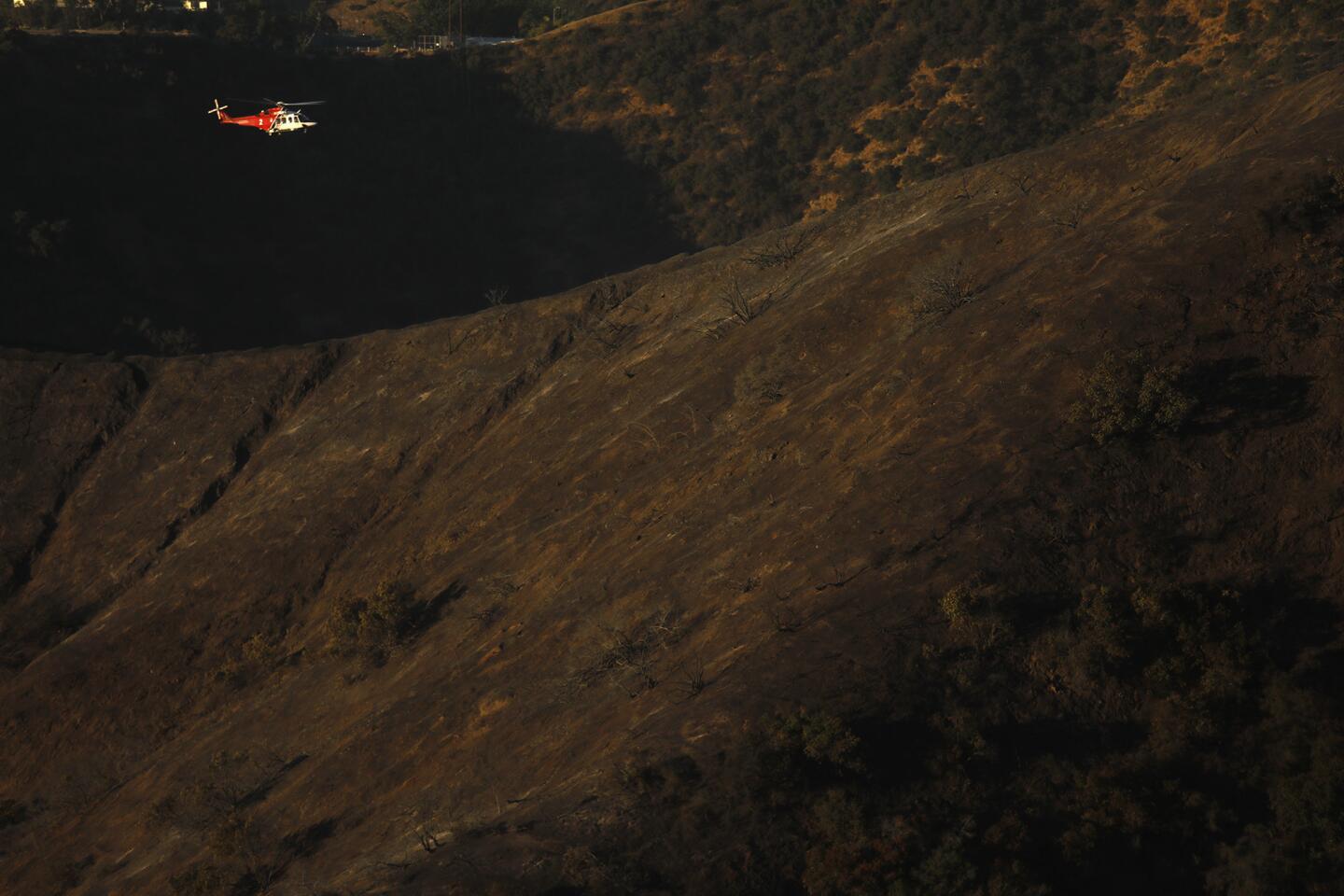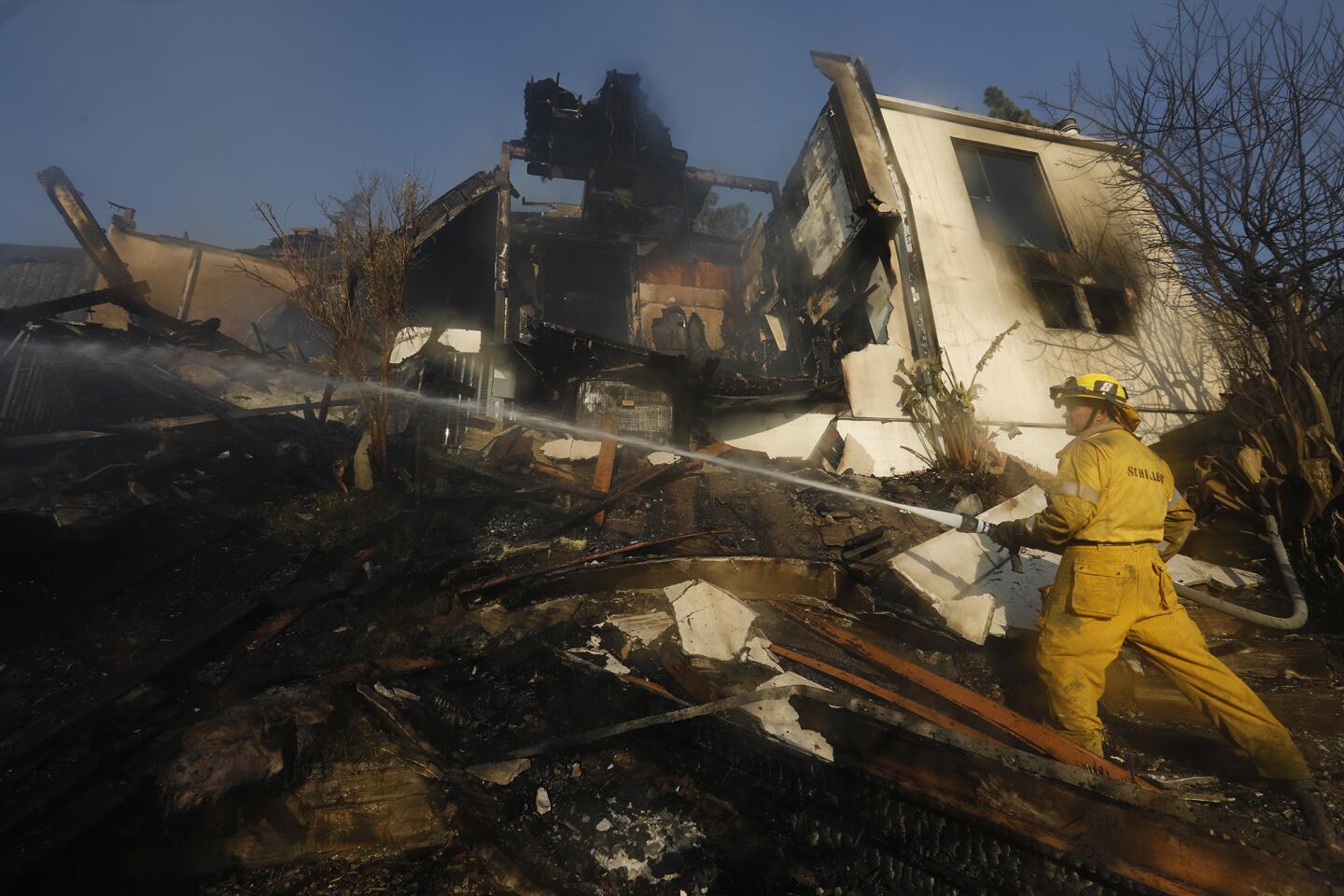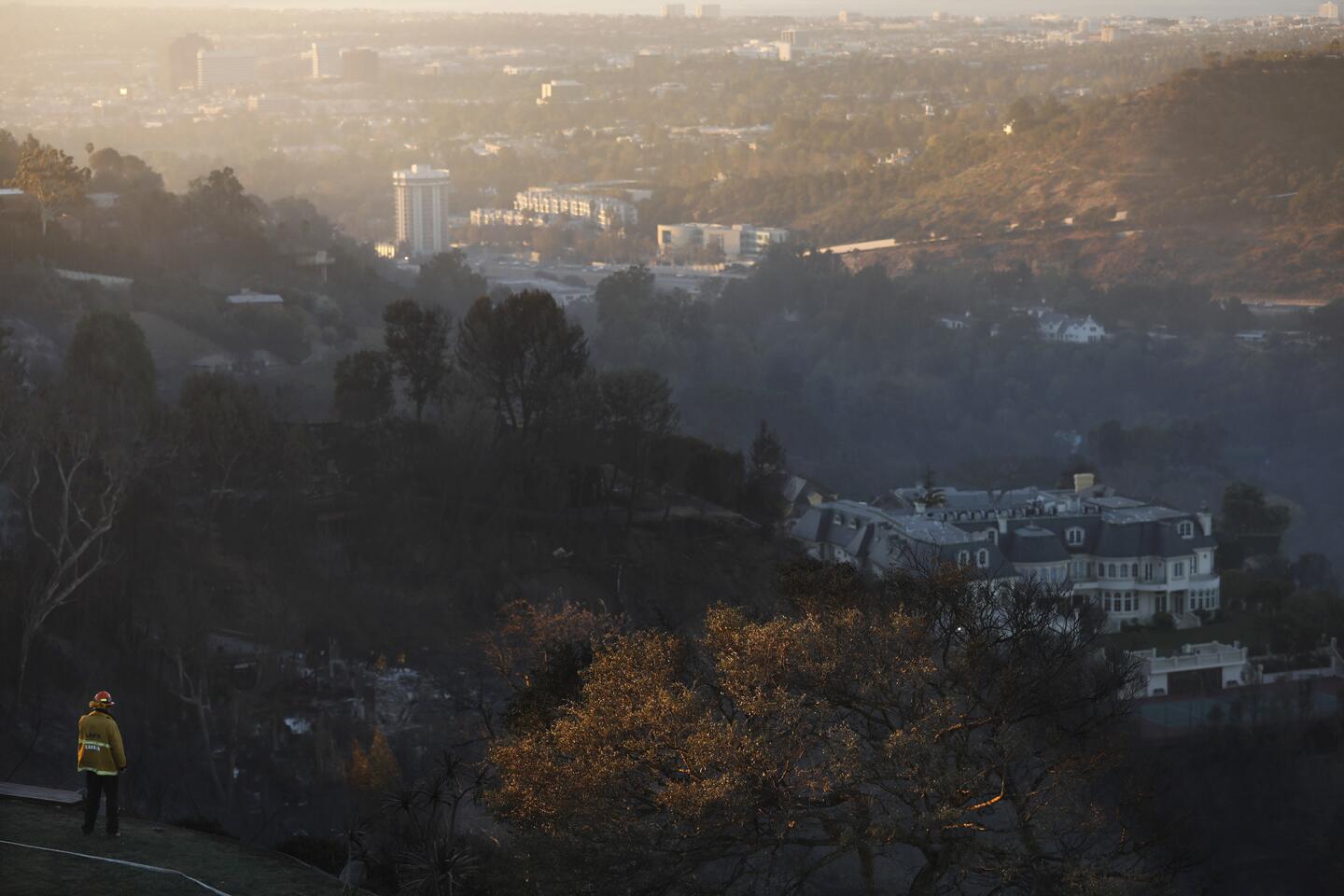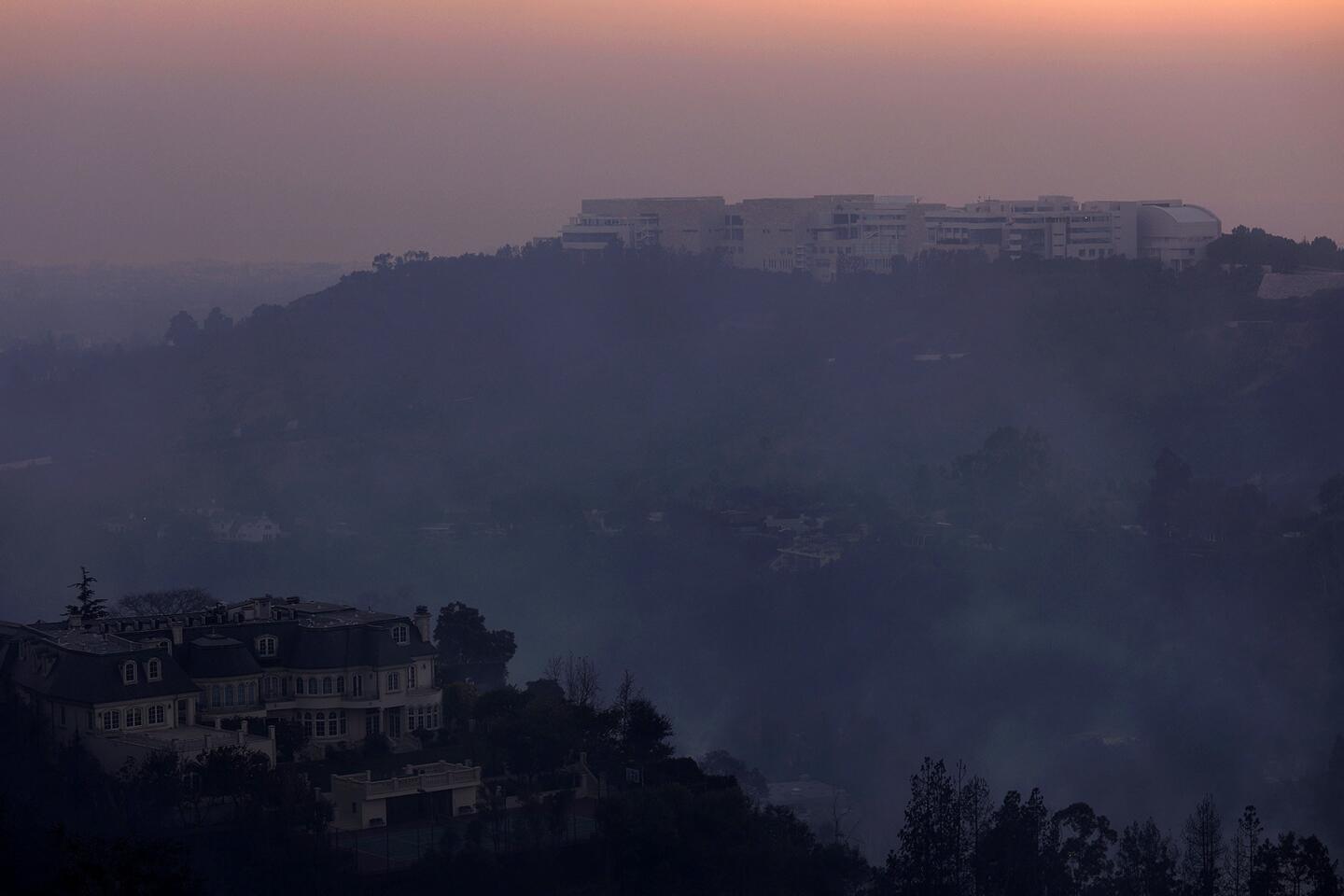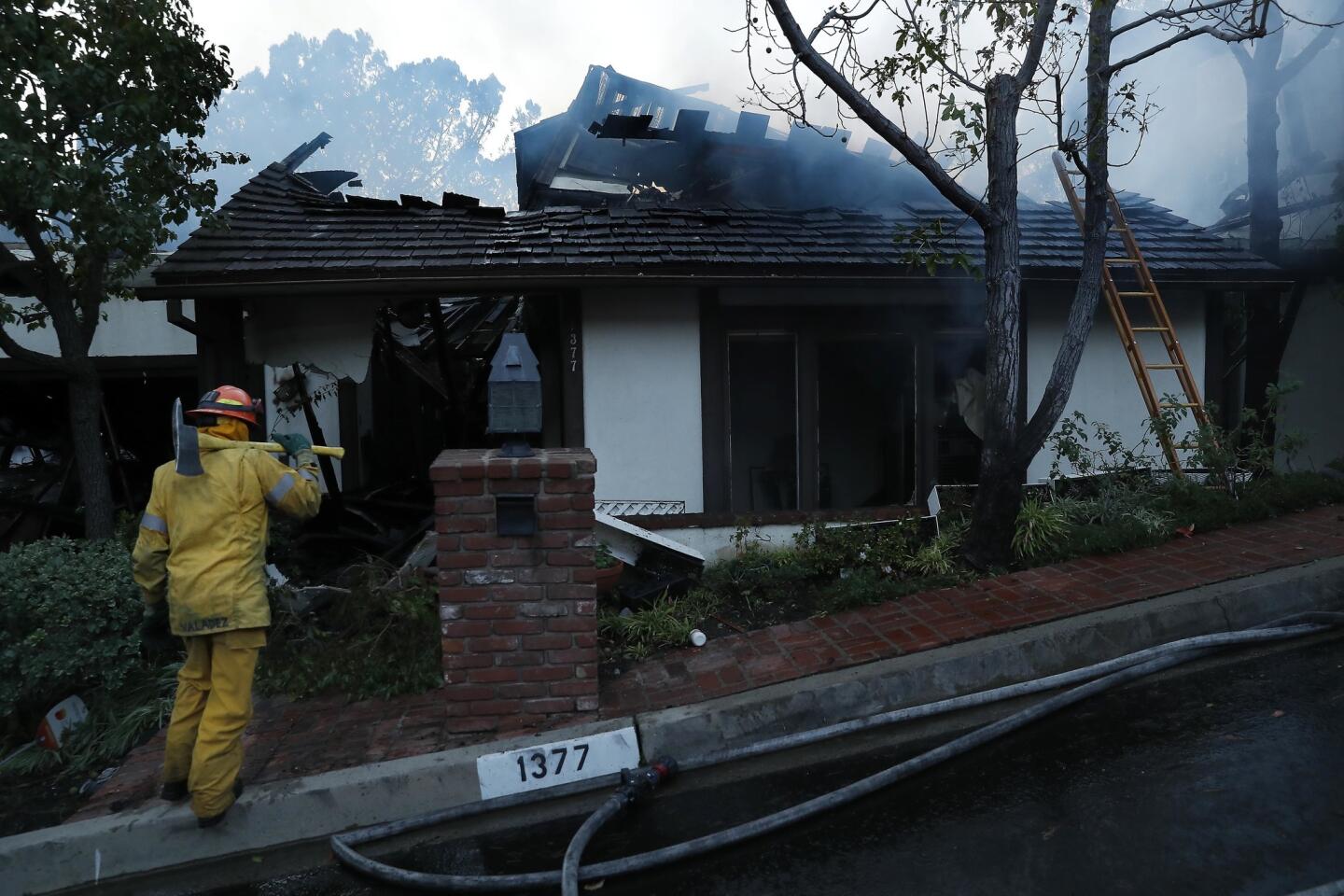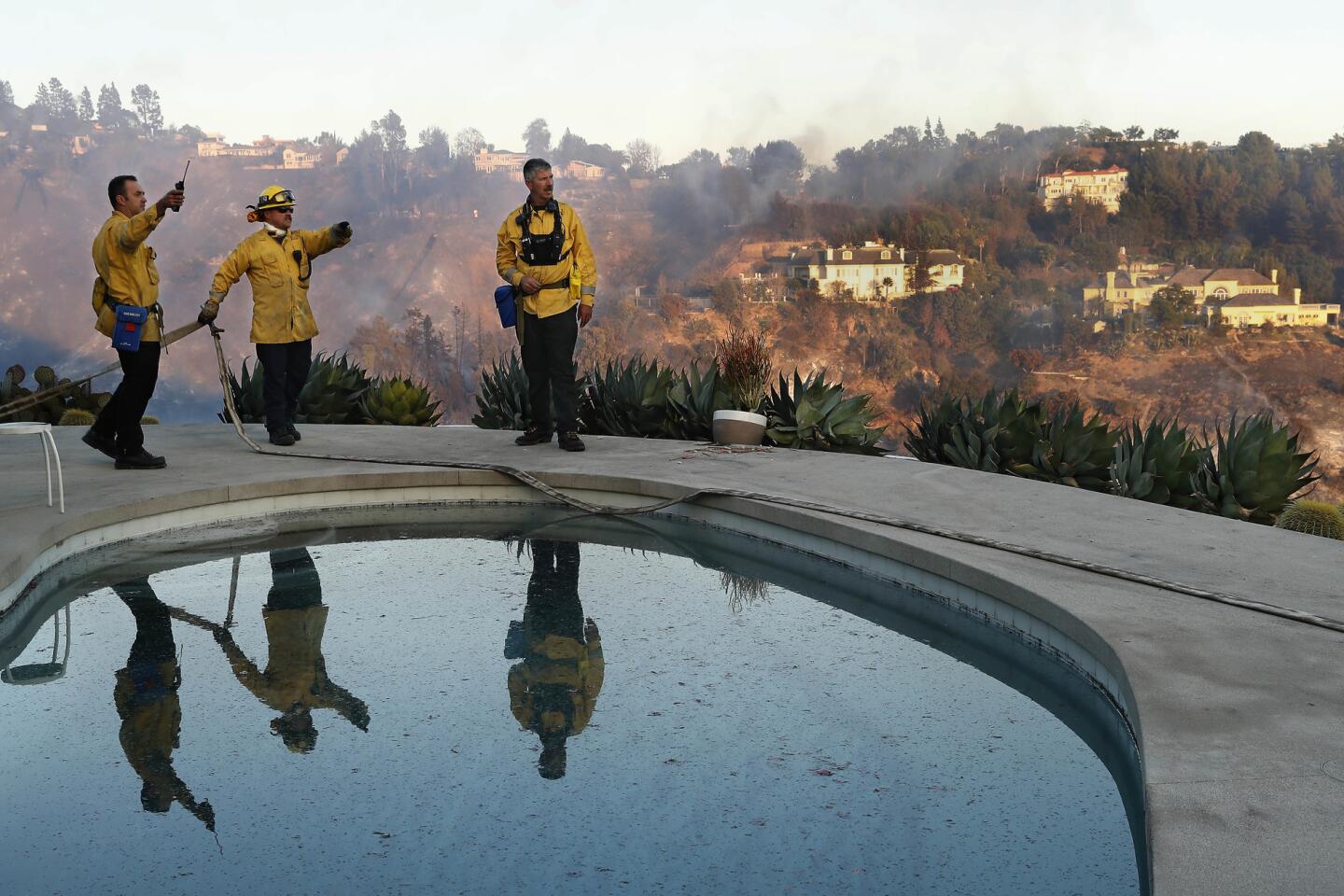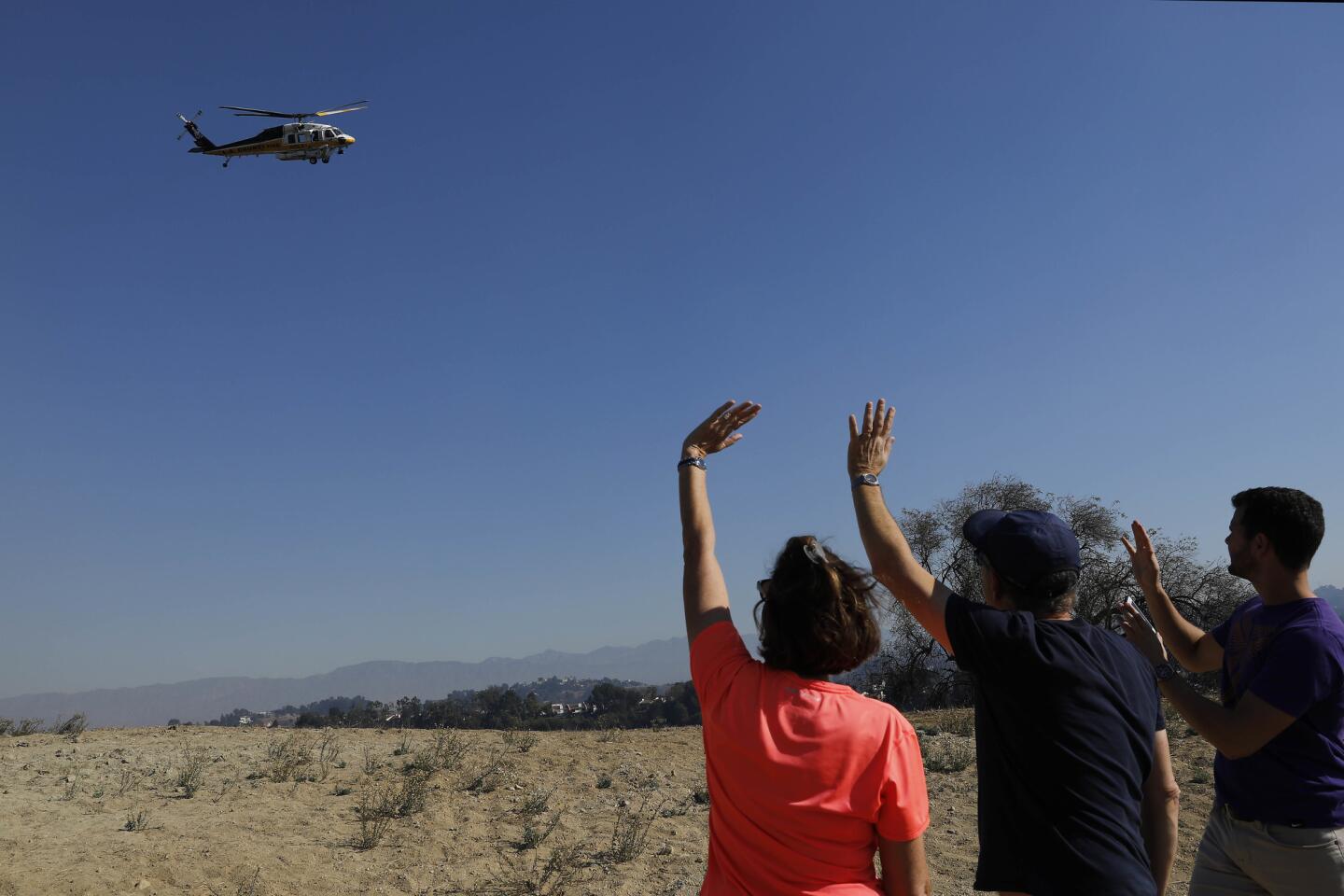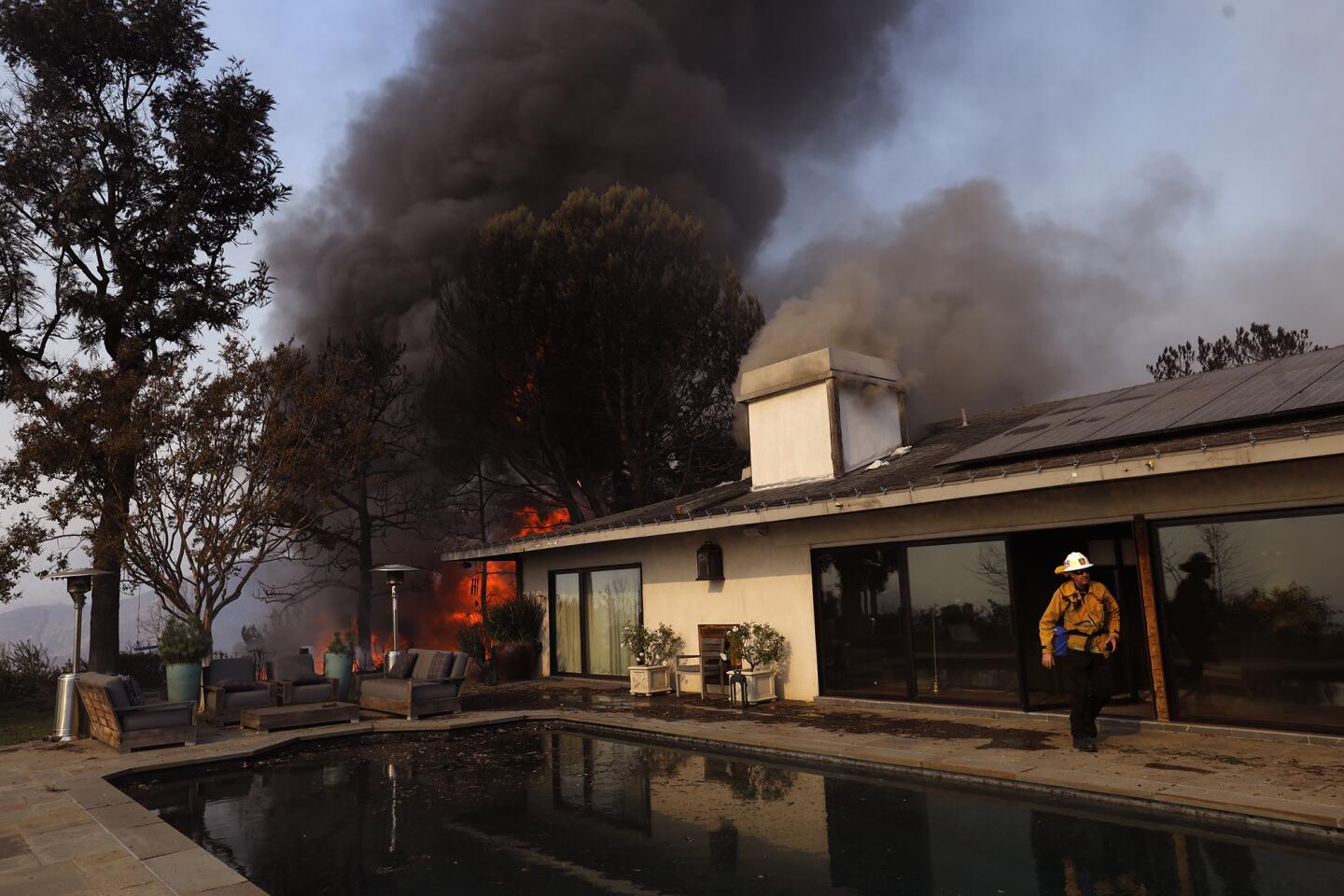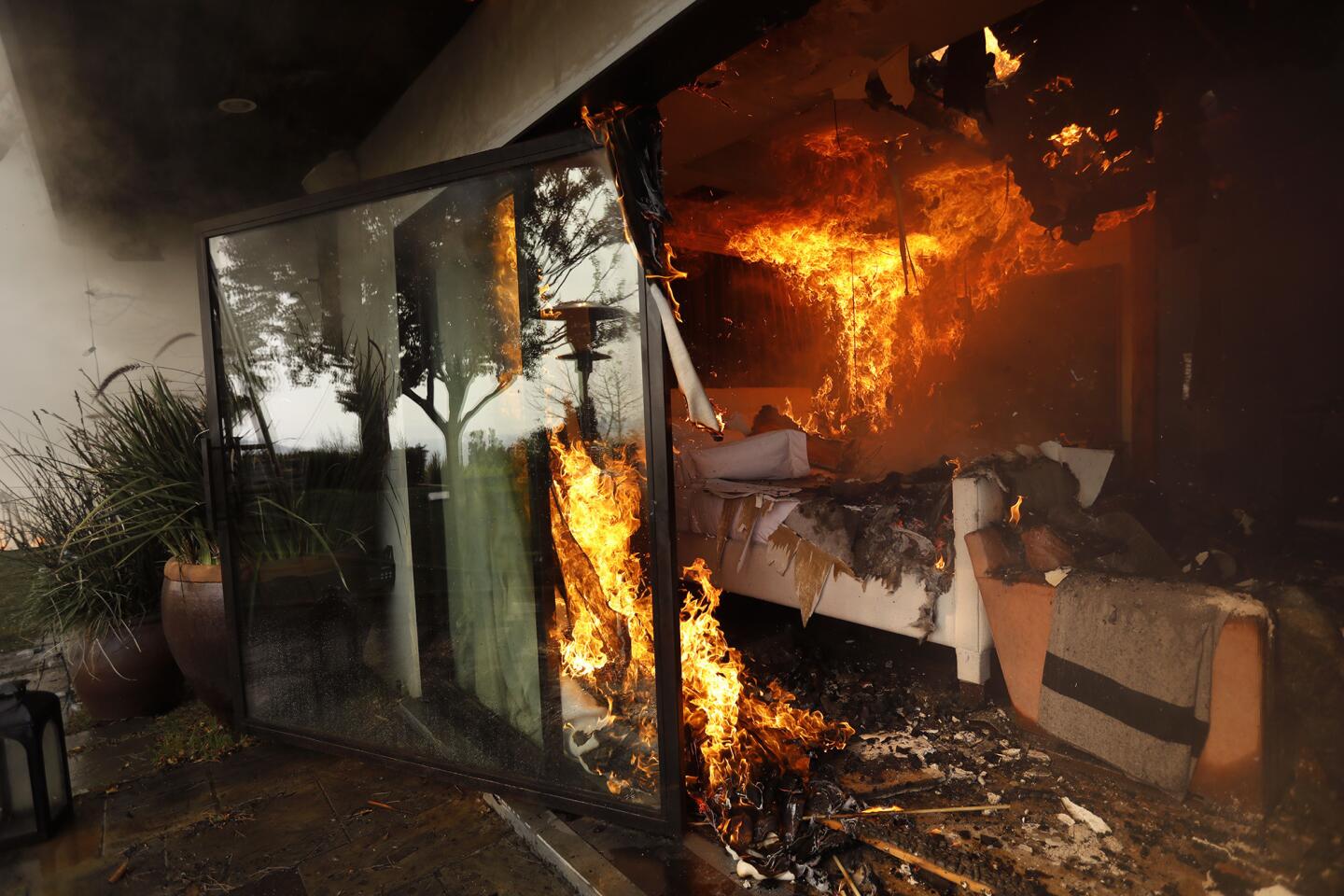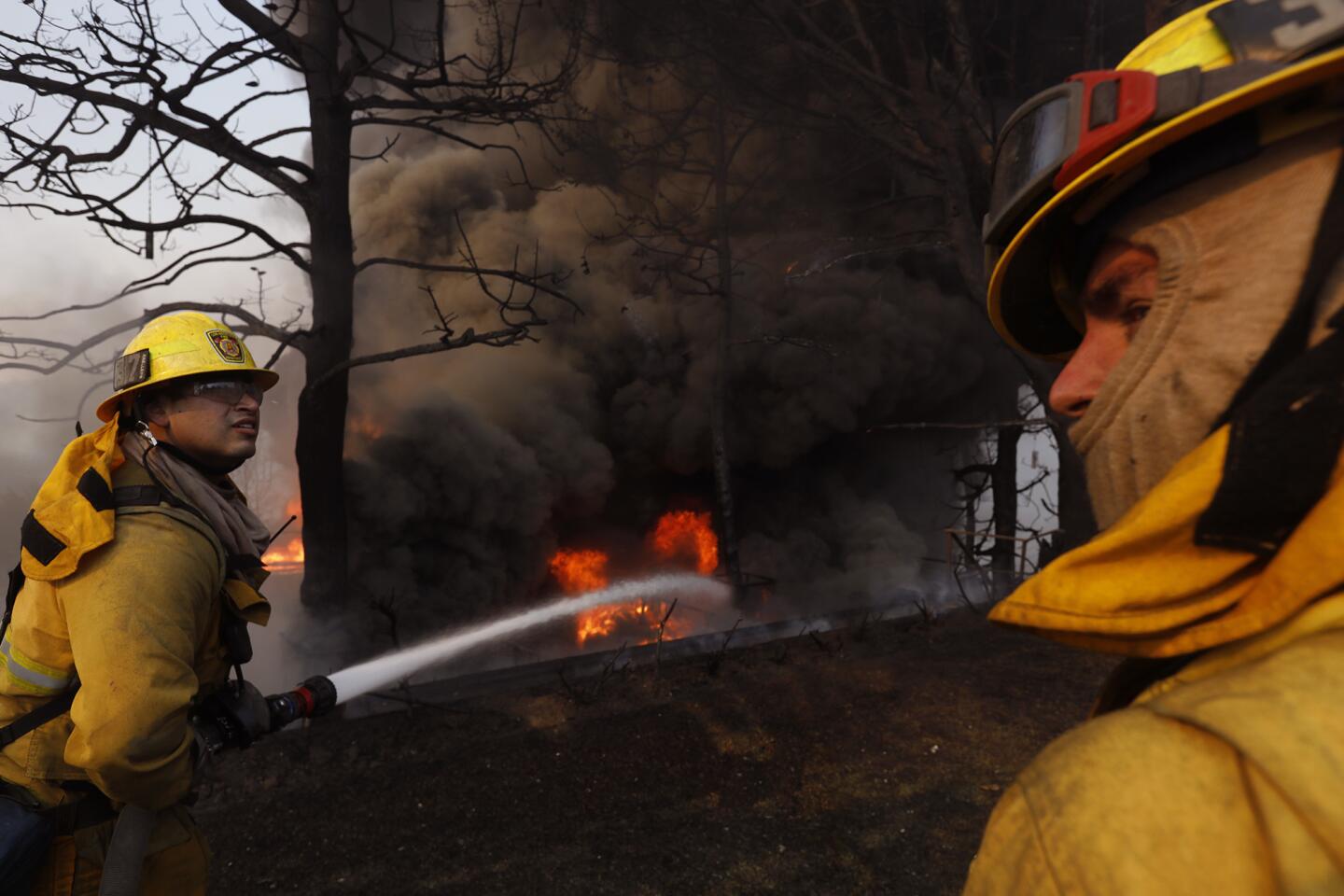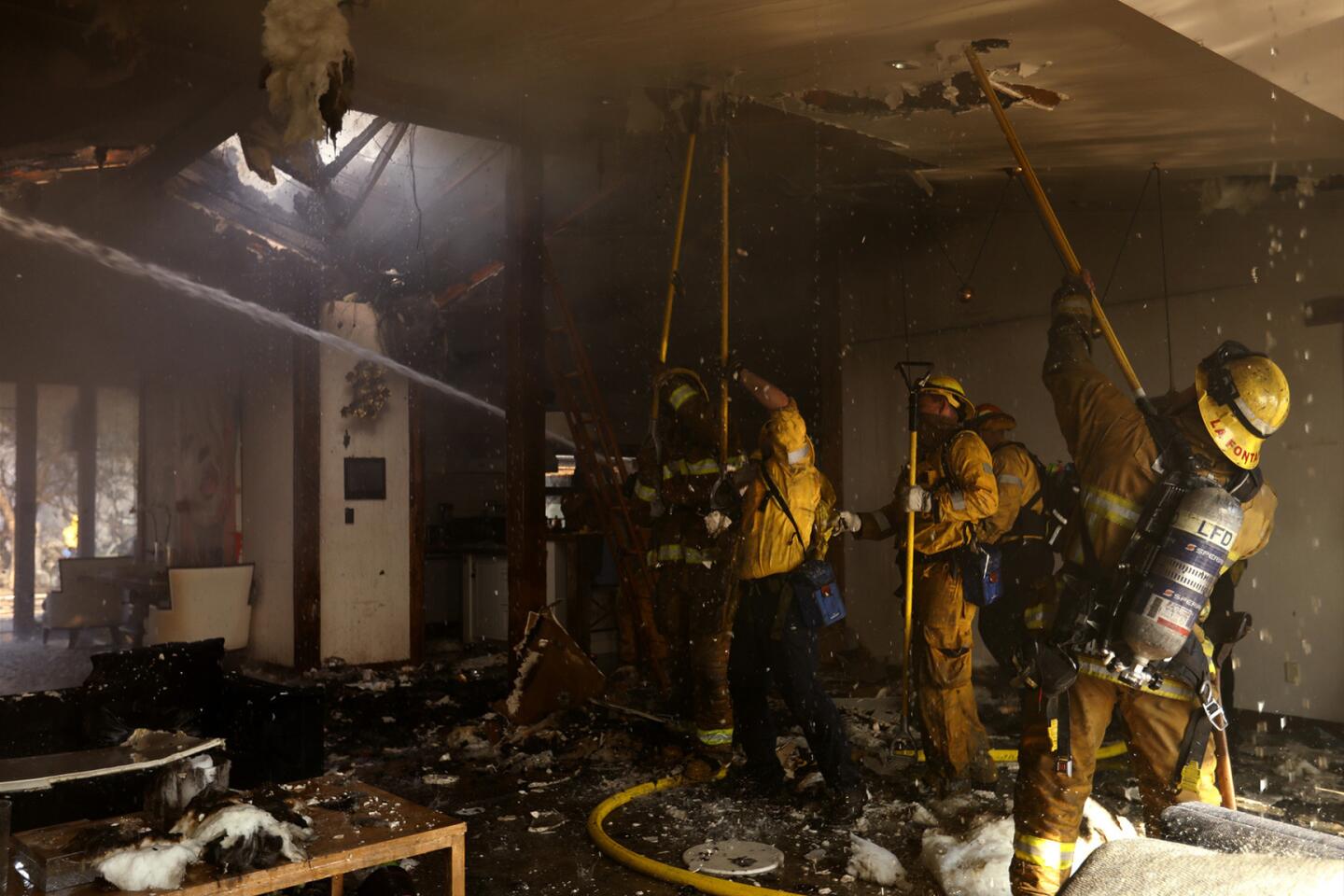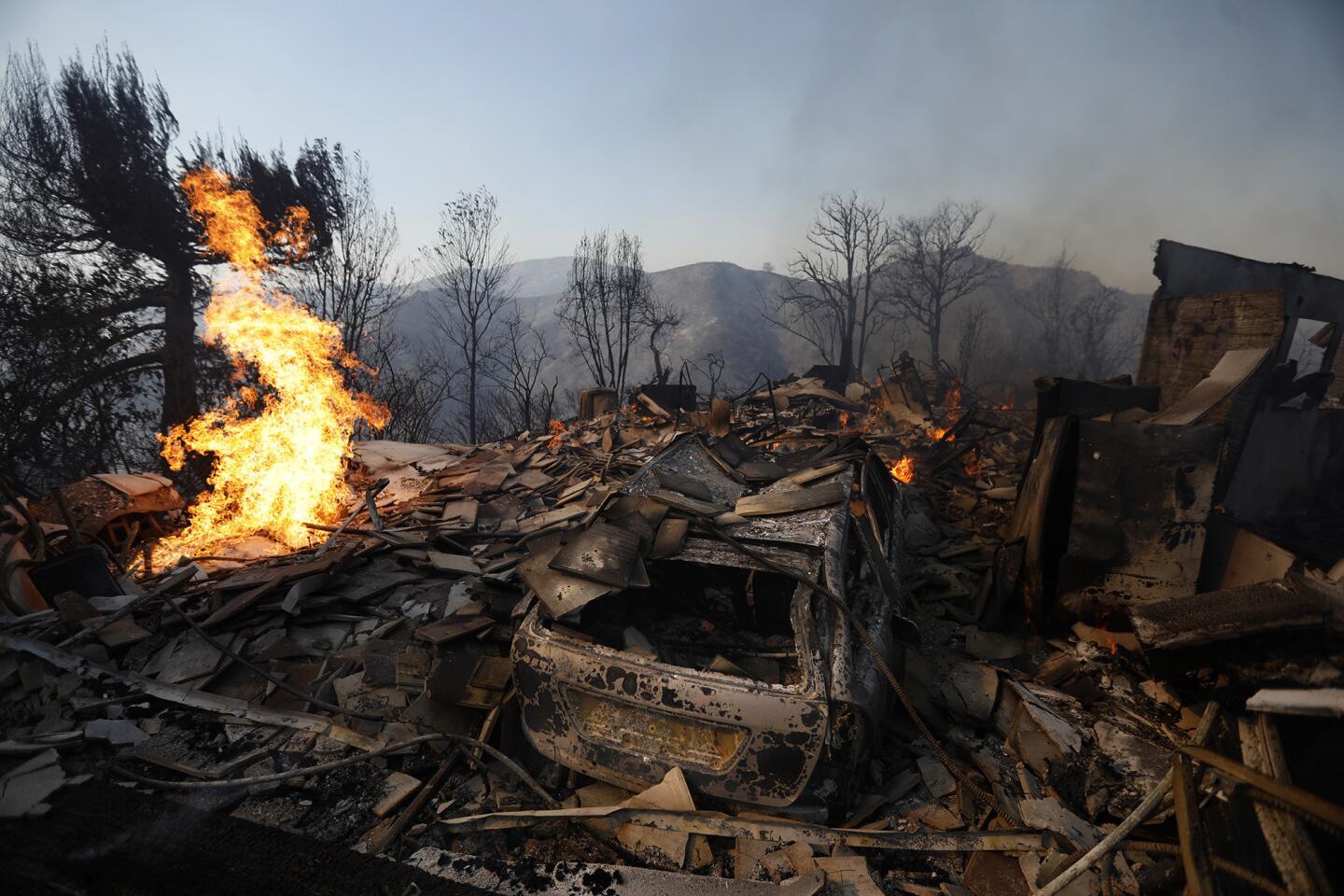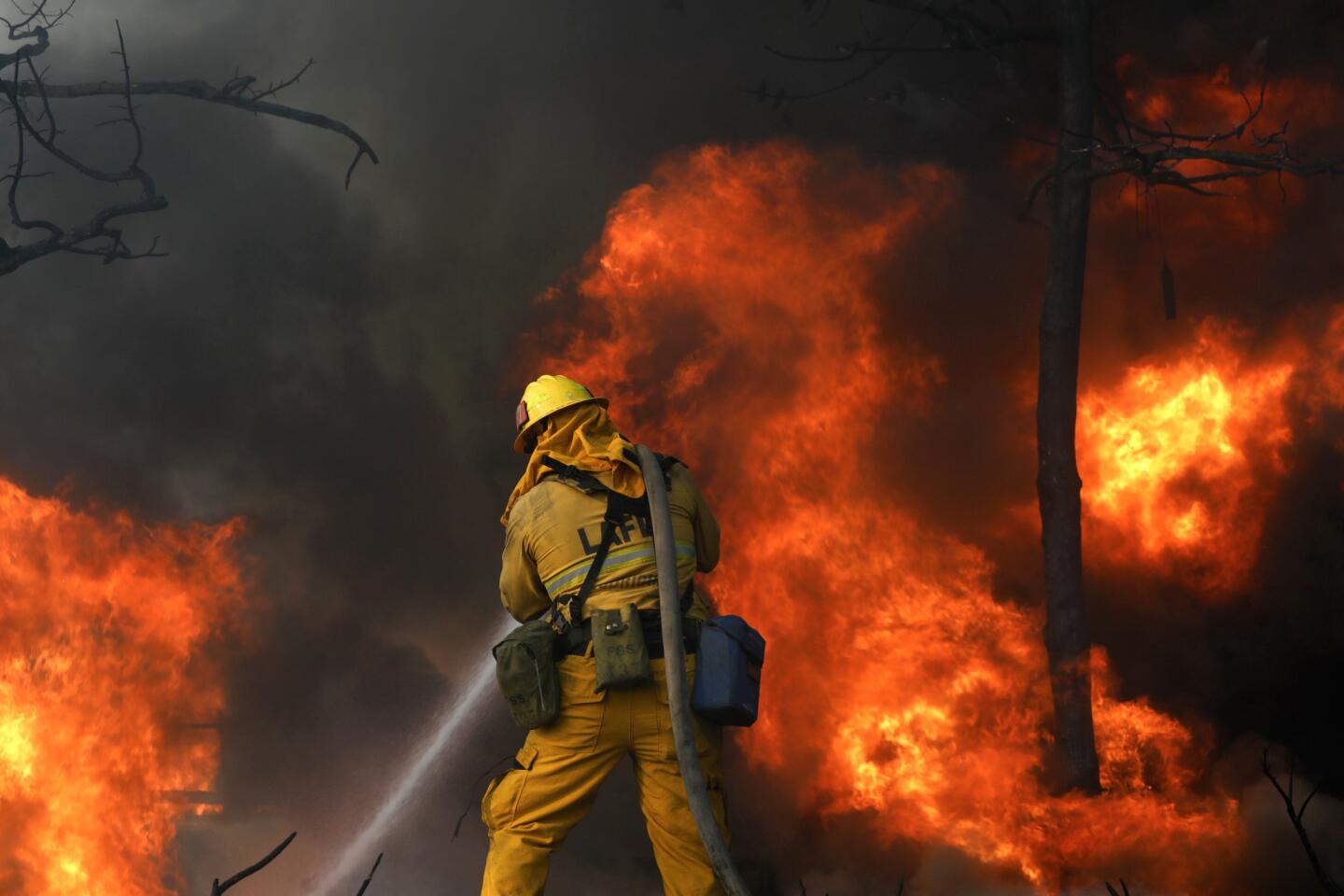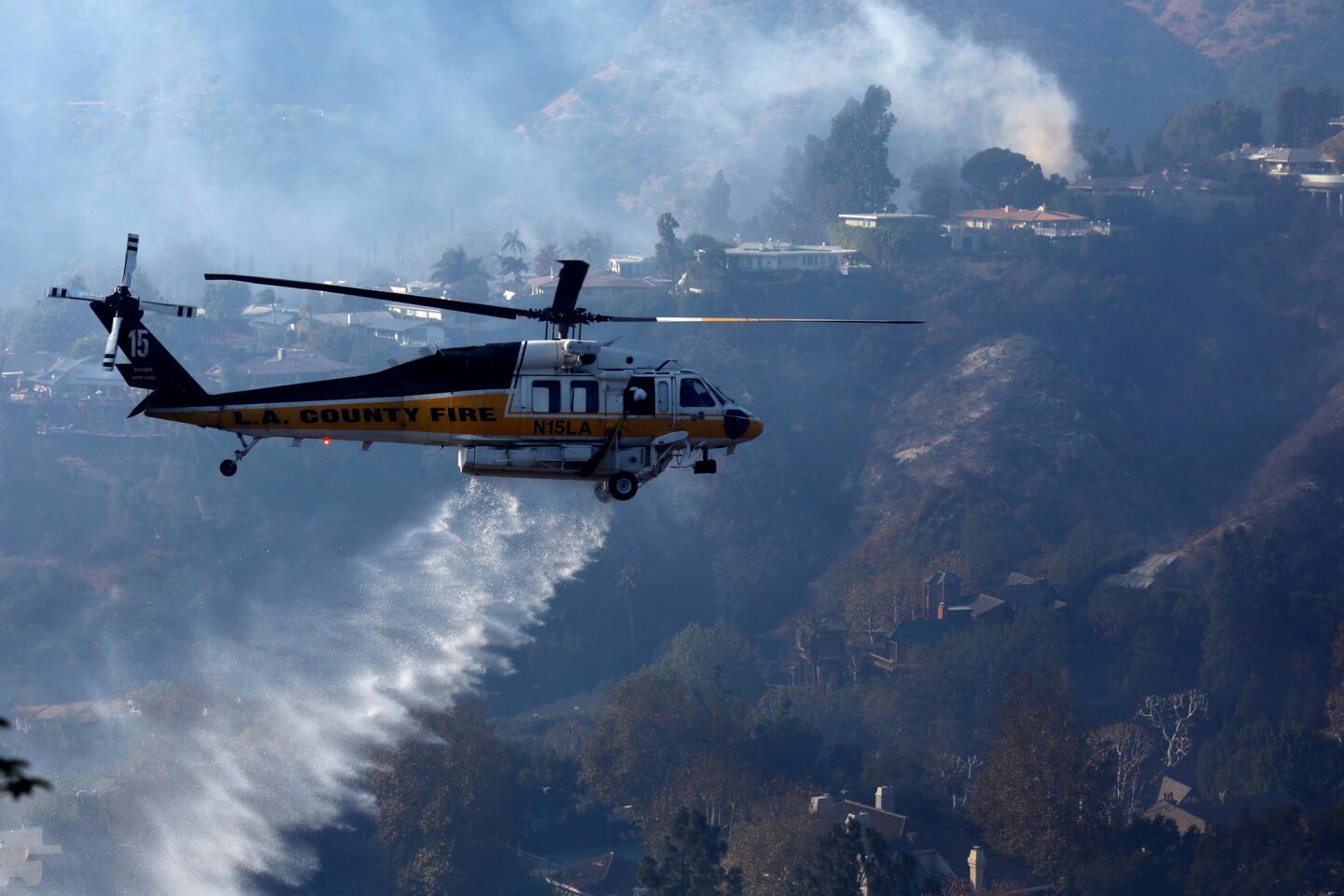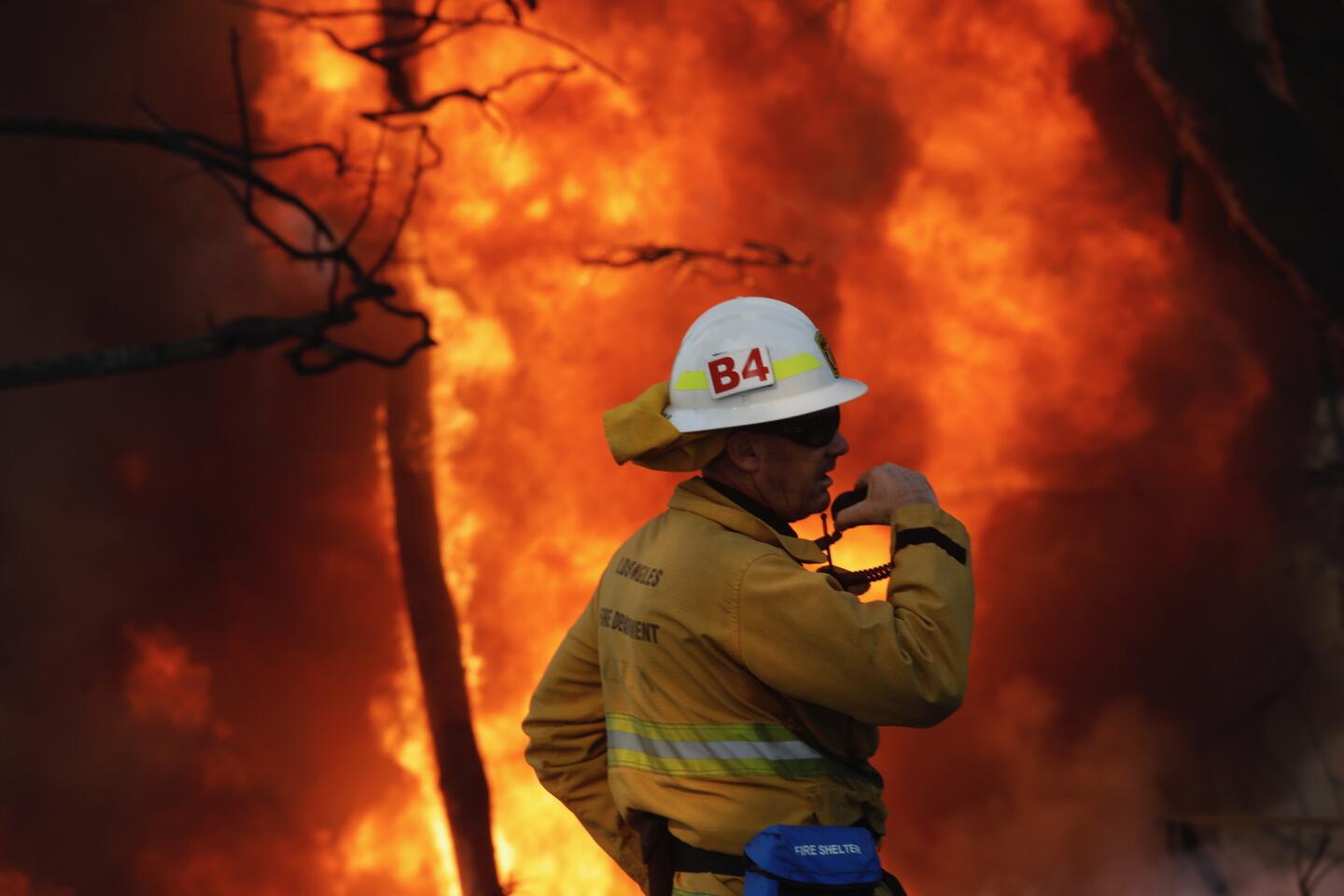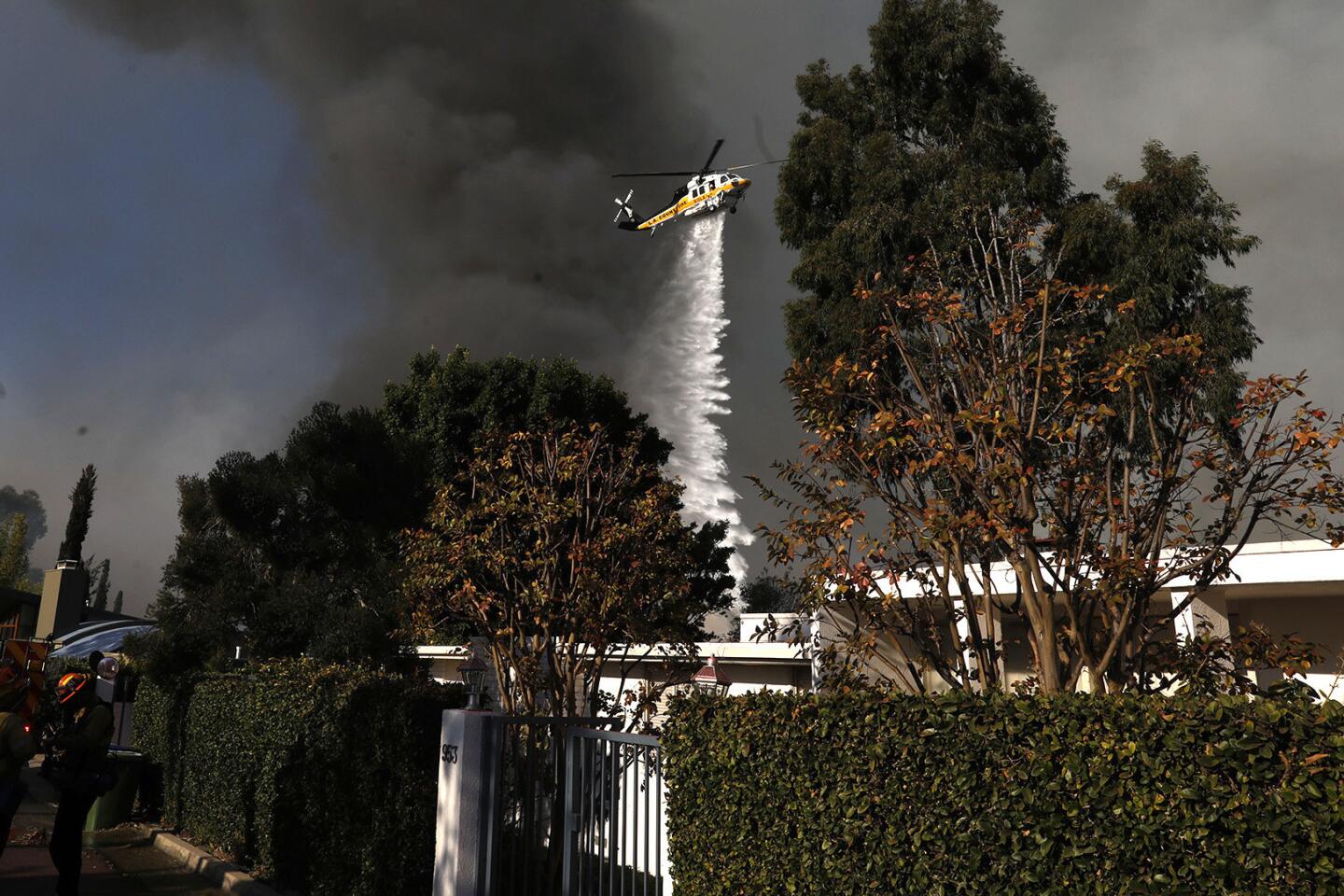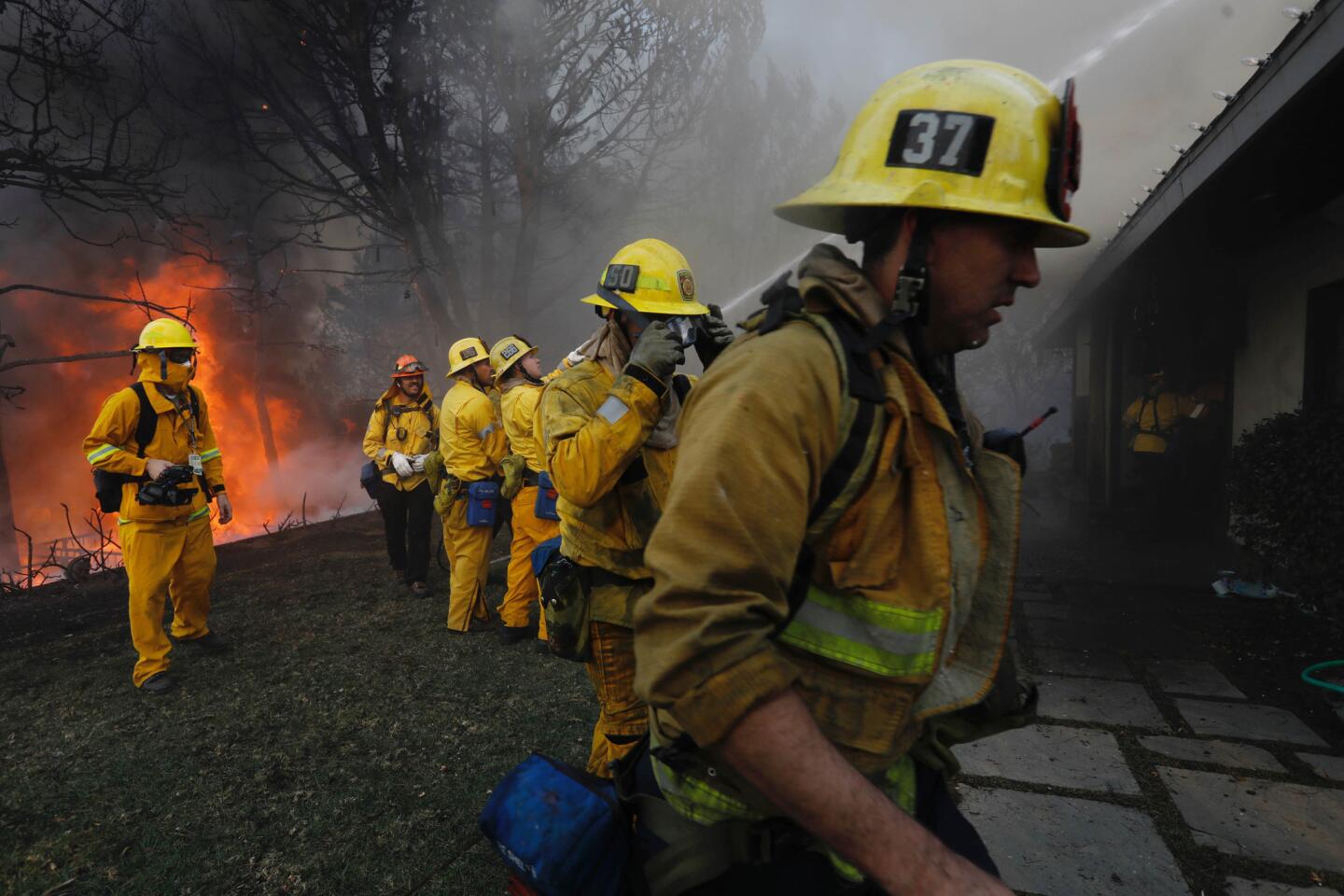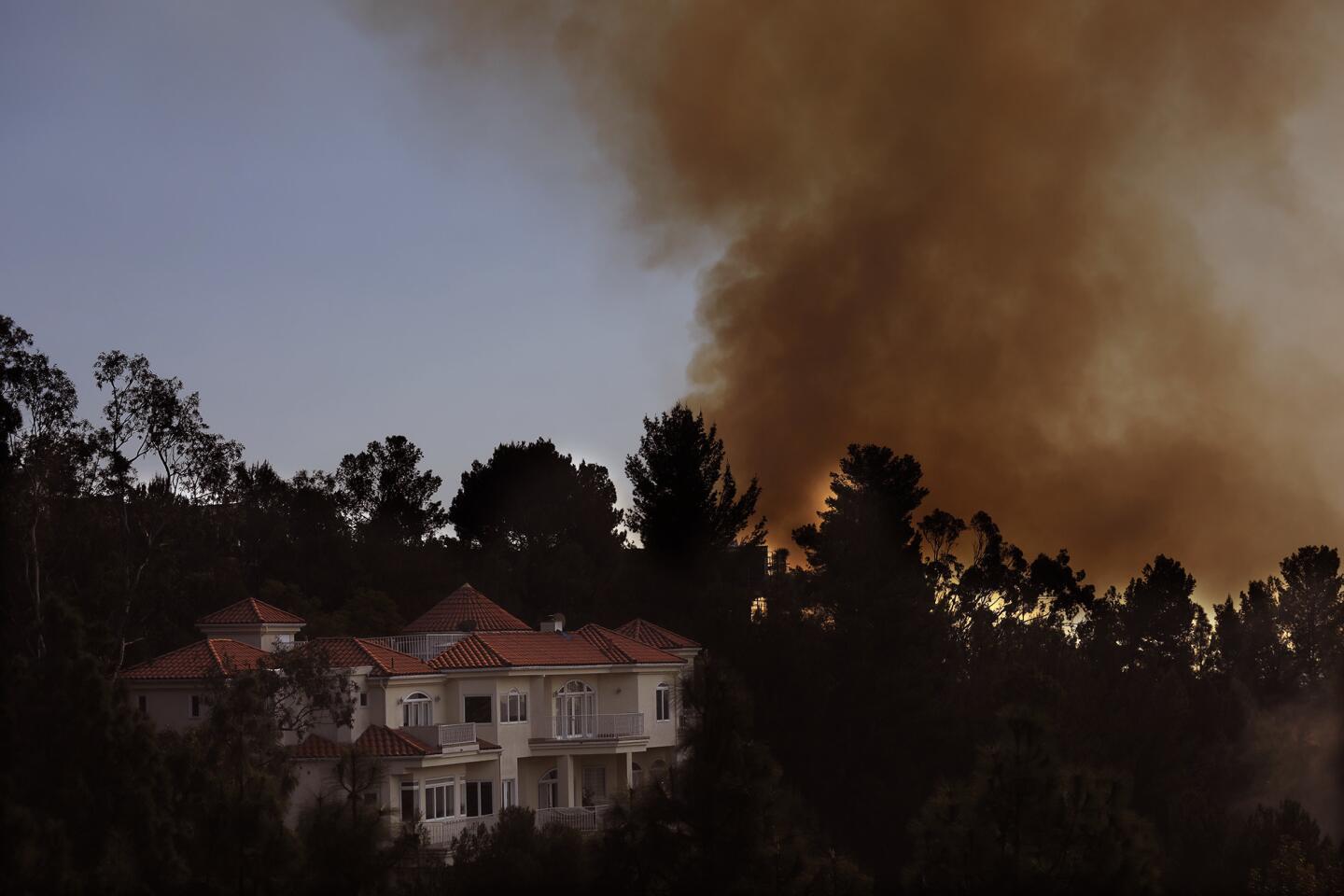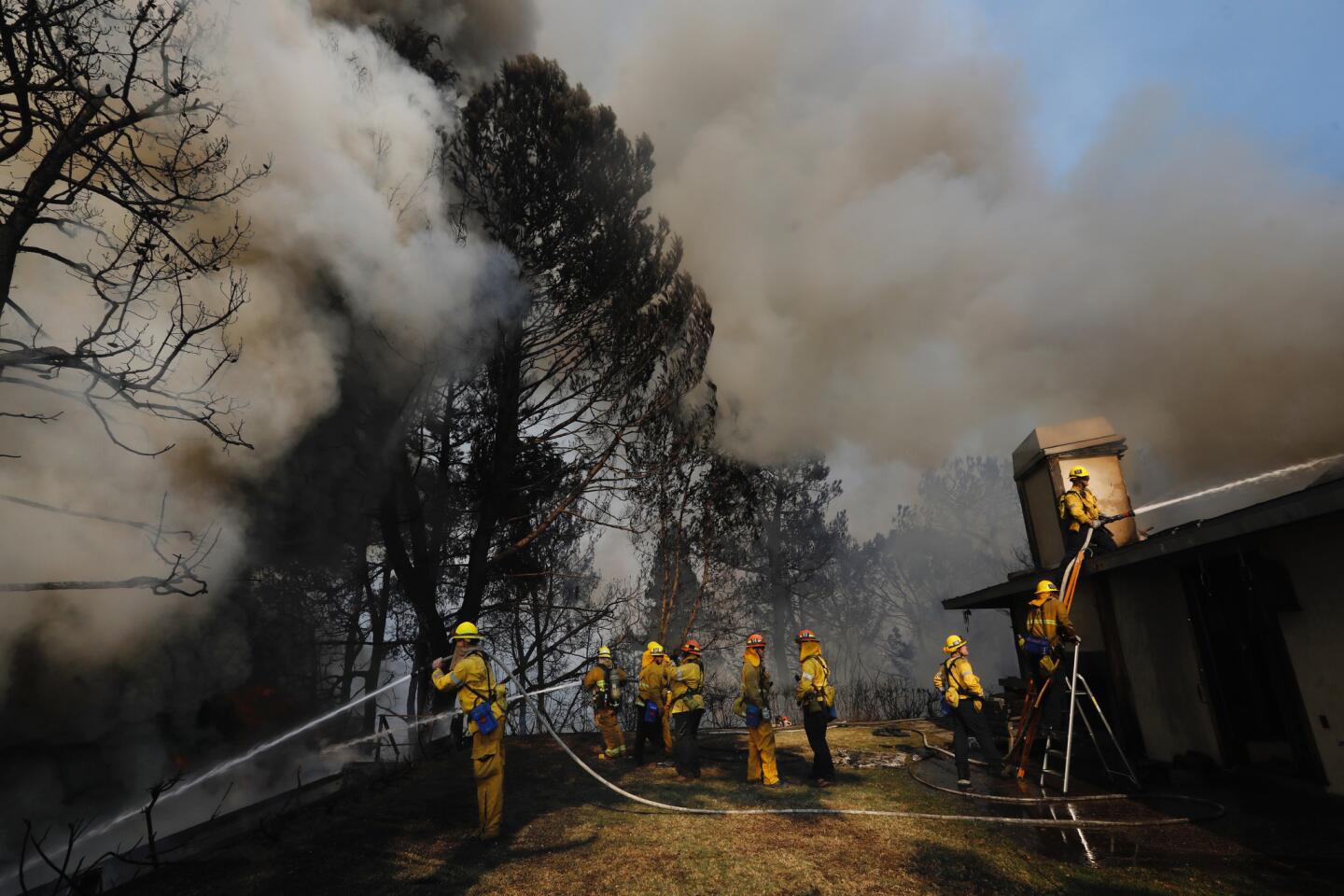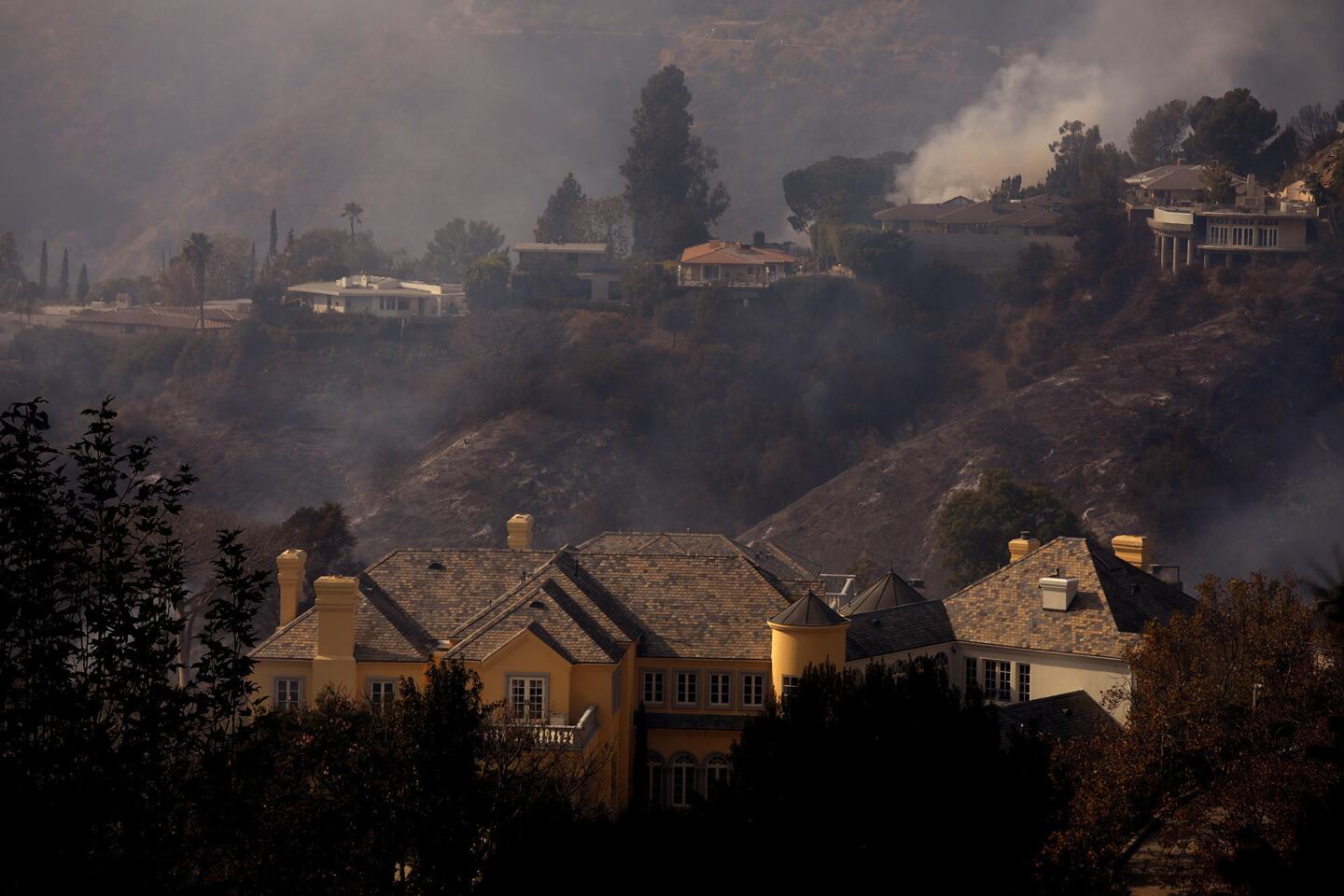Bel-Air wrestles with homeless crisis after encampment fire destroys multimillion-dollar homes
- Share via
In the tony hillside neighborhoods of Bel-Air and Brentwood, residents say they are aware of the homeless people who live in the shadows of their multimillion-dollar homes.
The affluent area along the 405 Freeway in the Sepulveda Pass, home to celebrities, corporate titans and others, has not been immune to the homeless crisis that has spread across Los Angeles. Some residents express sympathy and concern for the homeless, while others are wary and want them out.
But the Skirball fire, which destroyed homes and forced the evacuation of a large chunk of Bel-Air, has put the issue at the forefront of community debate. Officials say the blaze was caused by a cooking fire at a homeless camp along the 405. Investigators say the fire was set accidentally, but they have not been able to find those who occupied the camp.
Resident Alma Soll, whose balcony was covered with soot by the fire, said that the homeless population is a part of life in the area but that the fire was disconcerting.
“It’s scary,” said Soll, 70.
Many residents said they don’t want to demonize the homeless but also worry about the fire danger in the wake of the blaze, which spread quickly after starting Dec. 6 and was 90% contained a week later.
Sign up for the Essential California newsletter »
“I really sympathize and empathize with these people,” said Craig Conner, 53. “If my house were one of the six that burned down, maybe I’d be more angry,” he added.
Nickie Miner, vice president of the Bel Air-Beverly Crest Neighborhood Council, said residents have long worried about the fire hazard from hillside homeless encampments, but “all the agencies’ hands seemed to be tied.”
“We knew it was only going to be a matter of time before something horrible happened,” Miner said.
Miner said she was skeptical of the proposed campaign to educate homeless people about fire risks. Los Angeles needs a massive regulatory overhaul like the one that followed the 1961 Bel-Air fire, she said, which should include eliminating hillside encampments.
Debate about camps and the fire danger come as Los Angeles is struggling with a rise in the homeless population. An annual count in May found that homeless numbers in Los Angeles County had soared 23% to nearly 58,000 people in the last year. In the West L.A. service area — including Bel-Air and Brentwood — the homeless population rose from 4,659 to 5,511, in the same time period, the count found.
Photos taken of the Sepulveda encampment in September and shared with The Times showed a cluster of green and olive tarpaulins stretched across a canyon, partially hidden by treetops and brush.
The camp is “a little obscure,” Los Angeles Homeless Services Authority spokesman Tom Waldman said. An outreach team had not visited the ravine for at least a few months and possibly as long as a year, he said.
After the Skirball fire swept through, investigators found evidence that people had been cooking and sleeping in the area, but they did not find anyone to interview, Los Angeles Fire Department spokesman Peter Sanders said. The department has no suspects. The size of the encampment before the fire could not be determined because the area was so badly burned.
All that remained Tuesday was a scorched portable stove, a pot, a cheese grater, several fuel canisters and the remnants of a boombox. Burned pages of a children’s encyclopedia littered the charred brush and rocks in the canyon.
“Homelessness is a huge problem in our city,” added Dash Stolarz, director of public affairs for the Mountains Recreation and Conservation Authority. The fire “is one more indication that this is a major issue that we need to put all our resources into to deal with.”
ALSO
Investigation into cause of Southland wildfires probes Edison utility equipment
Fierce fight along Santa Barbara coast as fire threat eases in Ventura
How you can help fire victims in Southern California
UPDATES:
11:20 a.m.: This article was updated with a new containment number.
This article was originally published at 7:45 a.m.
More to Read
Sign up for Essential California
The most important California stories and recommendations in your inbox every morning.
You may occasionally receive promotional content from the Los Angeles Times.
